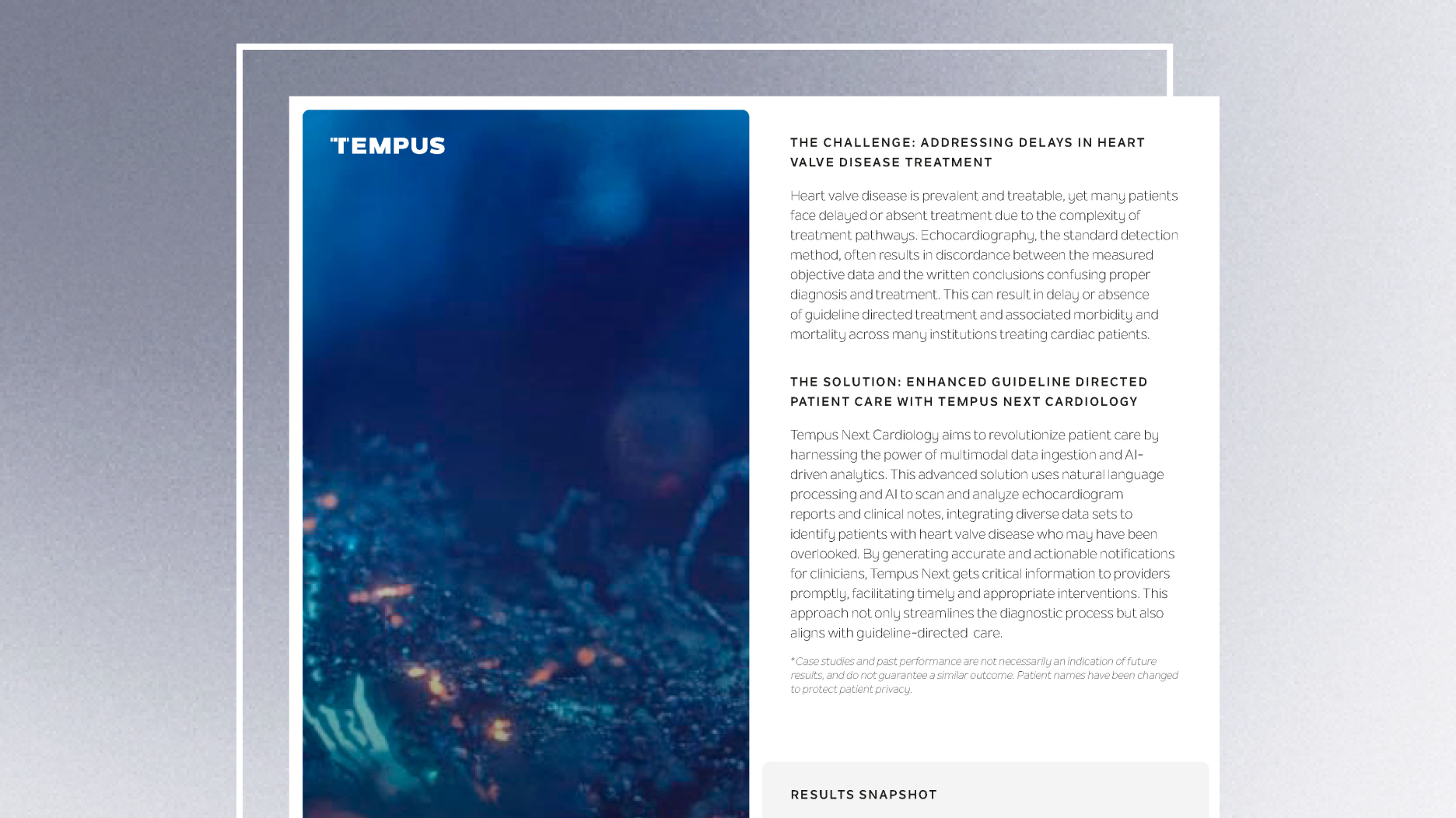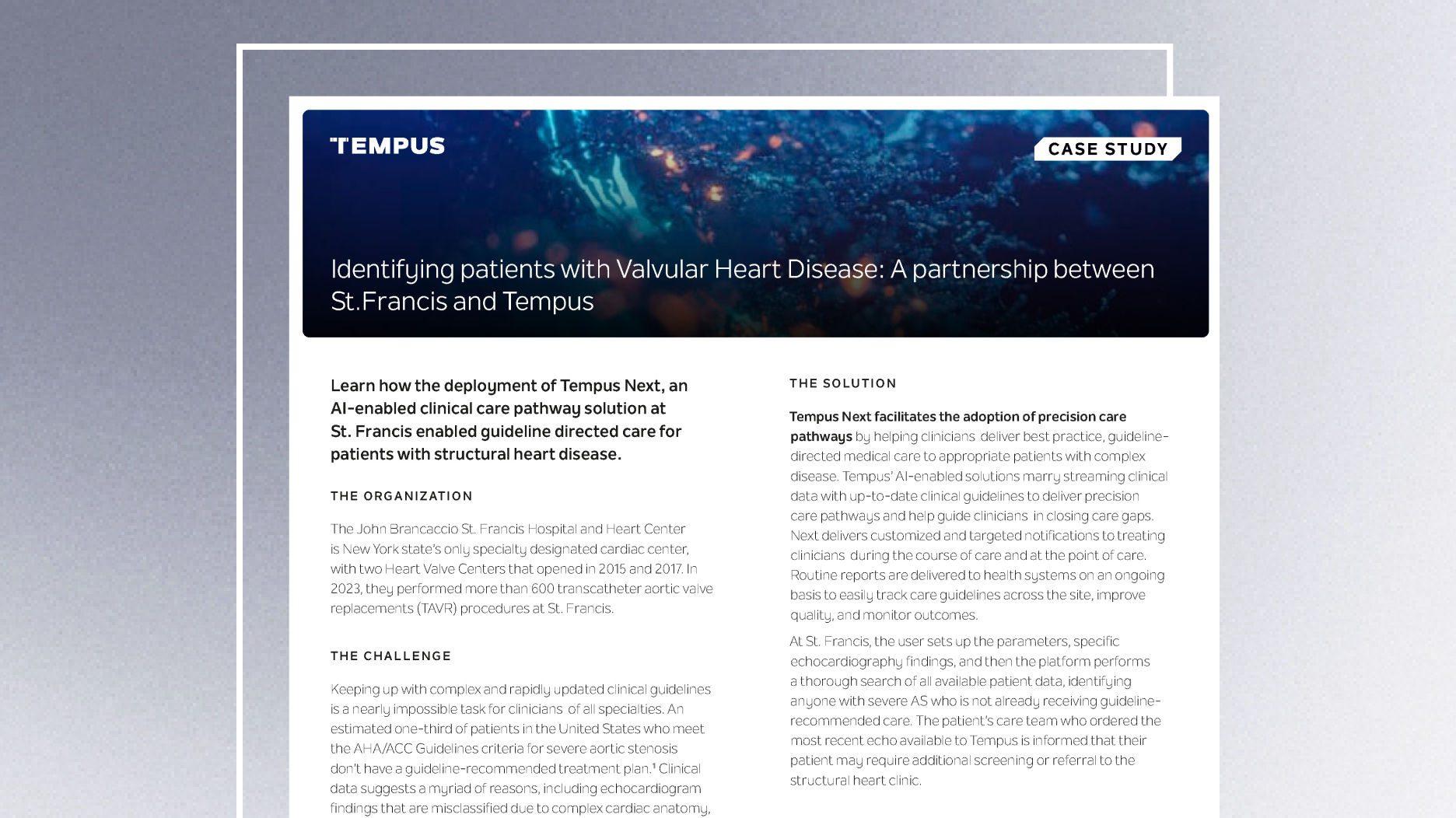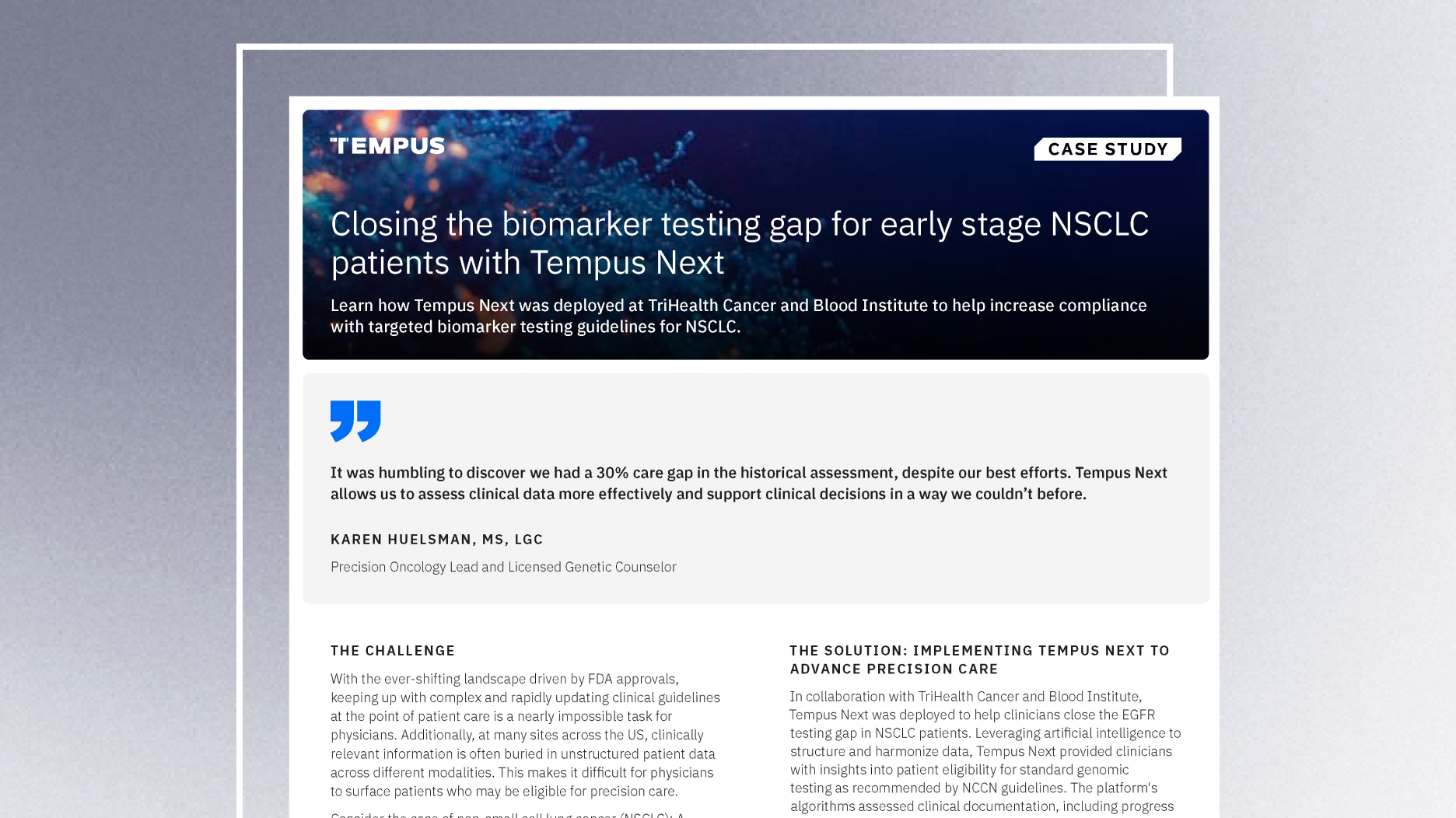-
PROVIDERS
REGISTER NOW
Navigating new frontiers in breast cancer care pathway intelligence: The role of providers and AI
Tuesday, July 29th
2:00pm PT, 4:00pm CT, 5:00pm ET -
LIFE SCIENCES
REGISTER NOW
Closing Care Gaps with AI: The Next Competitive Edge in Pharma
Monday, July 14
9am PT, 11am CT, 12pm ET -
PATIENTS
It's About Time
View the Tempus vision.
- RESOURCES
-
ABOUT US
View Job Postings
We’re looking for people who can change the world.
- INVESTORS
12/01/2022
CDx and cell therapies: Using NGS to power R&D
Learn how A2 Bio uses genomic data to develop companion diagnostics and therapeutics for patients with solid tumors.
Authors
Michael Yasiejko, MBA
General Manager and Executive Vice President, Tempus
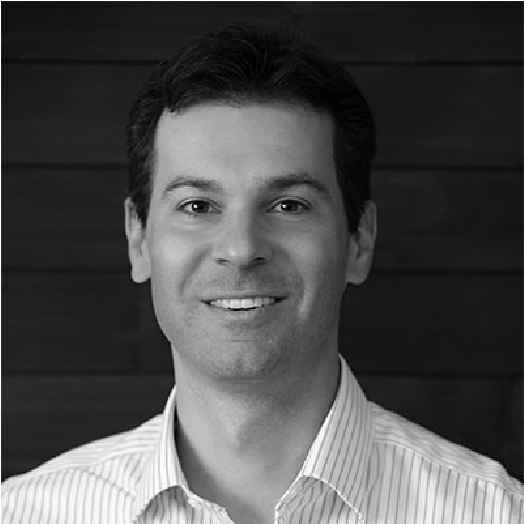
Will Go, MD, PhD
Chief Medical Officer, A2 Bio
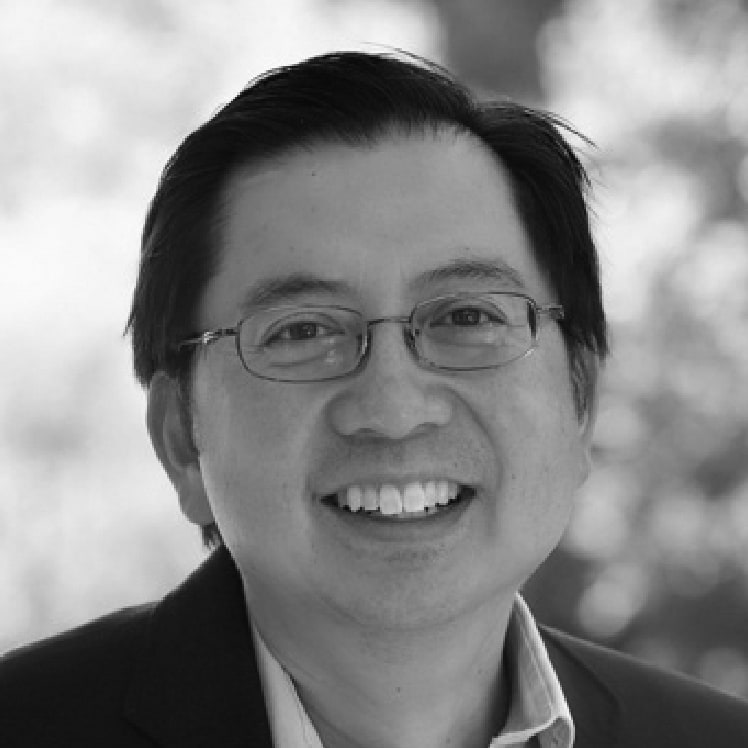
General Manager and Executive Vice President, Tempus

Will Go, MD, PhD
Chief Medical Officer, A2 Bio

This article is part of our series on innovative approaches to companion diagnostic development. See here for other pieces in the series, and stay tuned for the next article in which we explore how our peers and collaborators are working to advance data-driven precision medicine.
Next-generation sequencing (NGS) is a method of genetic sequencing that collects a wide range of data on the human genome. Given its depth of information, which may include data on genetic mutations or biomarkers, NGS has become a key tool for manufacturers in the precision medicine space as they use genomic data – including sequences of DNA, RNA, germline, and somatic information – alongside other types of real-world data (RWD) to develop companion diagnostics and targeted therapeutics.
A2 Bio, a biotech company focused on developing highly precise cell therapies in oncology, uses NGS and RWD to inform its development strategies. A2 Bio uses CAR-T technology to train patients’ own immune cells to fight against solid tumors, and partners with Tempus to leverage its genomic datasets and NGS capabilities for CDx development. Will Go, MD, PhD, chief medical officer at A2 Bio, spoke with Michael Yasiejko, General Manager and Executive Vice President at Tempus, to discuss how A2 Bio uses genomic, clinical, and real-world data to develop novel biomarkers, such as HLA-loss of heterozygosity, as a part of their companion diagnostic and drug development. We’ve summarized their conversation below.
We’ve edited questions and responses for clarity and length.
Mike: Thanks for joining me today to discuss data-driven CDx development and how the advent of structured multi-modal data can support innovative programs that will ultimately bring more options to patients. To start,can you please describe your career background and the experience that led you to join A2 Bio?
|
|
Dr. Go: My dream has always been to use patients’ own immune systems to fight cancer. I focused on T cells – which are immune cells – for my PhD, and I did an internal medicine and hematology/oncology bone marrow transplant fellowship at the University of California, San Diego. From there, I worked at several biopharma organizations, starting with Amgen, then Kite Pharma. After working in both hematology and oncology, I observed an unmet medical need in solid tumors. There’s a big difference between using CAR-T therapies for hematology versus oncology. In hematology, blood cancers are treated by removing and modifying cells to enable immune cells to detect harmful cancer cells, then reinfusing them back into the body. This method wouldn’t work for solid tumors – while you can live without a few immune or plasma cells for a while, you can’t live without the lining of your gastrointestinal tract, your heart, or your lung, for example. This led me to A2 Bio, where we develop logic-gated CAR-T cell therapies for solid tumors. |
Mike: Given the heterogeneity of cancers you mentioned, how are technologies like NGS data valuable to providers, patients, and other healthcare stakeholders? How can we further extend its impact?
|
|
Dr. Lin: NGS is now increasingly the standard of care in patients with metastatic cancer, as it should be, because it informs providers of all of the treatment options available – from FDA-approved therapies to those in clinical development. With all of this data, we can better match patients with cancer centers where they can receive the most relevant treatment. Access to NGS for patients is key. However, NGS isn’t being used as much as it could be in the real world, and we see inequities in access to this type of specialized care especially in rural communities and certain racial groups. It behooves all of us in biotech to ensure better access to all people with cancer and all people with need. As an industry partner across diagnostics and industry, we should take note of what’s possible to reduce inequities. It’s a key metric for all of us – whether you’re in FDA, NIH, or the community. |
Mike: How do you think about RWD in a holistic way to inform drug and companion diagnostic development?
|
|
Dr. Go: We appreciate the importance of having a wide breadth of data and bioinformatics power. Especially when working with solid tumors, it’s important to have a longitudinal view of progression. To gain this, we need to partner with surgeons, pathologists, medical oncologists, and diagnostic partners, because it takes a village to investigate solid tumors using RWD. Then, using serial biopsies and longitudinal views of patients’ tumors over time, we can understand not only who gets the most benefit from a treatment, but also use the data to inform our next steps. Should we amend clinical trials to expand our patient populations? What should be the next clinical development target to maximize our pipeline? Working with Tempus, we’ve co-published abstracts at the American Society of Clinical Oncologyand Society for Immunotherapy of Cancer meetings that show how RWD can help us develop novel therapeutics. This is how we pave the way forward to address all types of cancer with precision medicine – not just pancreatic, lung, and colorectal like we’ve done so far, but also ovarian, head and neck, and breast cancers. |
Mike: As programs develop, how do you think about incorporating companion diagnostics? How does RWD support this work?
|
|
Dr. Go: I sometimes think about diagnostics and therapeutics like a scene from the movie Top Gun – you need to land two planes onto an aircraft carrier at the same time, or, in this case, develop the diagnostics and therapeutics side-by-side. Planning for a companion diagnostic at the beginning of the drug development process is essential for understanding what success will look like in the end for an interventional therapeutic. It’s also important to use companion diagnostics early to understand who would gain the most value from a therapeutic. Today we can use technology to help with this; the platform-based diagnostics at Tempus – which use germline, somatic, and RNA sequencing data – can inform the translational team’s next steps after the clinical trial. You can also use the data to observe standard of care methods or the tumor microenvironment, which shows how the characteristics of a tumor evolve over time. In addition, with data from serial biopsies, you can see a longitudinal view of how a tumor progresses from baseline, through treatment, to post-treatment, or, sadly, after relapse. These insights are critical during development. |
Mike: What are some of the challenges to using RWD to inform companion diagnostic development and/or commercialization? How can we address those challenges?
|
|
Dr. Go: Patients often forget that their data is theirs. There’s a perception that data is “owned” by data providers, which isn’t true. We need to have better medical communications with providers and patients so they understand that their data – including NGS data – is theirs. In addition, it’s important that providers – particularly those at large academic centers – have access to health data in a more usable fashion. There is so much healthcare data available that analyzing it can be both an opportunity and a challenge, especially when data such as those from different NGS tests comes in many different formats. It’s important to have curated clinical data that can show the evolution of different patients’ cancers. We can facilitate this through app or website integrations to help them query the information in a big data, multi-terabyte way. The infrastructure is getting there. The question now is how we use that wealth of data to make an actual difference on patient outcomes. I’m excited to see how developments in bioinformatics can empower biotechs like A2 Bio to achieve precision medicine. In the future, I hope that, through working with organizations like Tempus, we can take a patient’s diagnosis with, say, pancreatic cancer, and use data to identify the right logic-gated, A2 Bio, T-mod CAR-T cell therapy for them, off the shelf. That’s the dream: to cure cancer by getting the right therapy to the right patient at the right time. |
Mike: How did you evaluate precision medicine partners’ offerings alongside your priorities to find the right match?
|
|
Dr. Go: In my career – now spanning over ten years each in both biotech and academia – I’ve learned the importance of first understanding the question you’re trying to address, then figuring out the type of technology you must deploy to answer it in a scalable way. During my days working on panitumumab at Amgen, it was clear, even back then, that having all of the tissue samples from all of the trials would enable us to identify a biomarker to differentiate benefit and risk for patients. When I came to A2 Bio, I knew the number one priority was to set up a master pre-screening protocol, which we call BASECAMP-1. After performing NGS with Tempus, we place all patients’ data in BASECAMP and harvest their T-cells before they begin therapy. This makes it easier to identify patients to enroll in interventional trials. Working with Tempus, we know that we can explore the germline, somatic, and RNA sequences of patients with a certain tumor type, for example, to inform our work. We work together to design a more ideal end state of the future of our field. It’s not the destination, it’s the journey. And the infinite gain is being ahead of the curve while being judicious on resources with an eye toward scalability. |
Mike: What advice do you have for other biopharma organizations who are considering how to incorporate RWD into companion diagnostic and clinical development programs?
|
|
Dr. Go: Number one is to always keep the end goal in mind. What does the ultimate product profile and BLA and PMA look like? Two, consider how you can use your resources effectively to be fit-for-purpose during difficult economic or market times. Here, it’s helpful to work with diagnostic partners as thought partners. Tempus has helped us understand what to prioritize and how to be purposeful and judicious with resources. |
Learn more
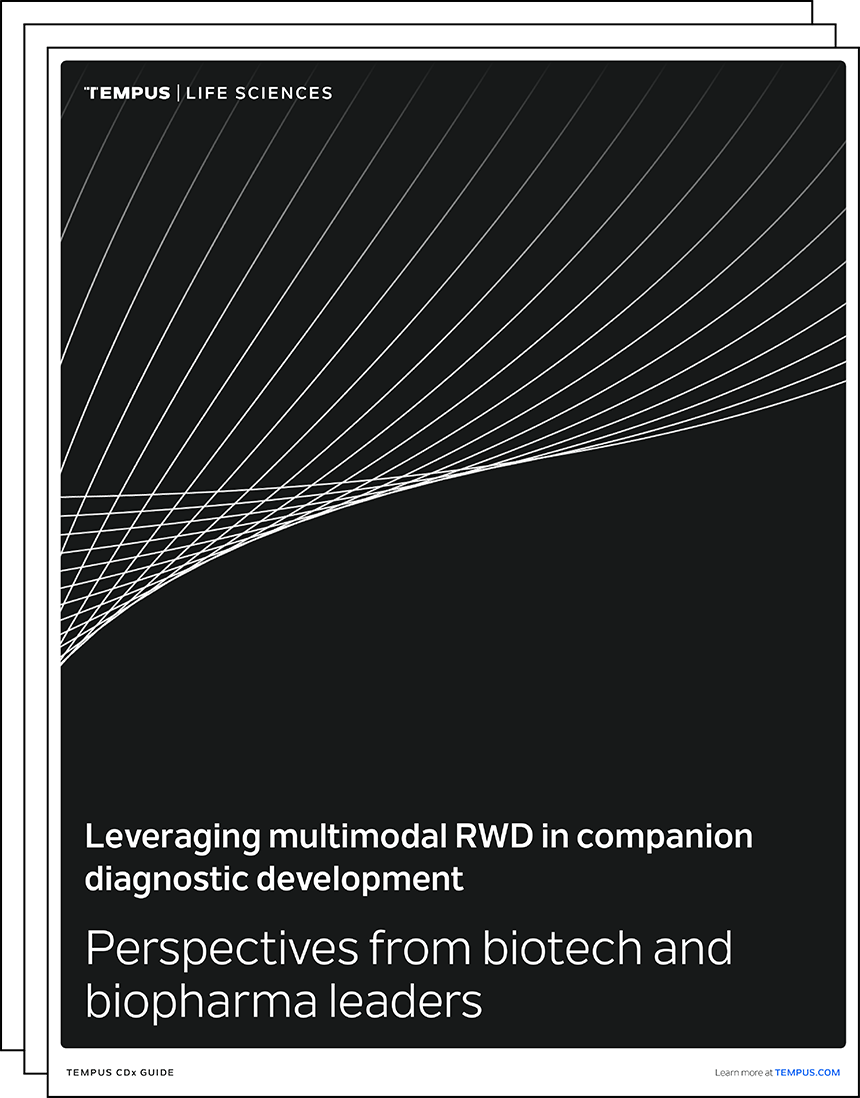
Learn more
Leveraging multimodal RWD in companion diagnostic development
Perspectives from biotech and biopharma leaders
DOWNLOAD GUIDEStay informed
Be notified whenever Tempus publishes new and relevant research, webinars, and other resources.
Sign up-
06/25/2024
Revolutionizing Cardiac Care: AI-driven detection and treatment of critical heart valve disease at Boulder Community Health
Discover how Tempus Next's AI-powered care pathway platform transformed patient outcomes by helping ensure timely, guideline-directed treatment for critical heart valve disease at Boulder Community Health
Read more -
04/15/2024
Identifying patients with Valvular Heart Disease: A partnership between St.Francis and Tempus
Learn how the deployment of Tempus Next, an AI-enabled clinical care pathway solution at St. Francis enabled guideline directed care for patients with structural heart disease.
Read more -
04/15/2024
Closing the biomarker testing gap for early stage NSCLC patients with Tempus Next
Learn how Tempus Next was deployed at TriHealth Cancer and Blood Institute in Cincinnati, Ohio to surface and close gaps in biomarker testing for NSCLC patients.
Read more
